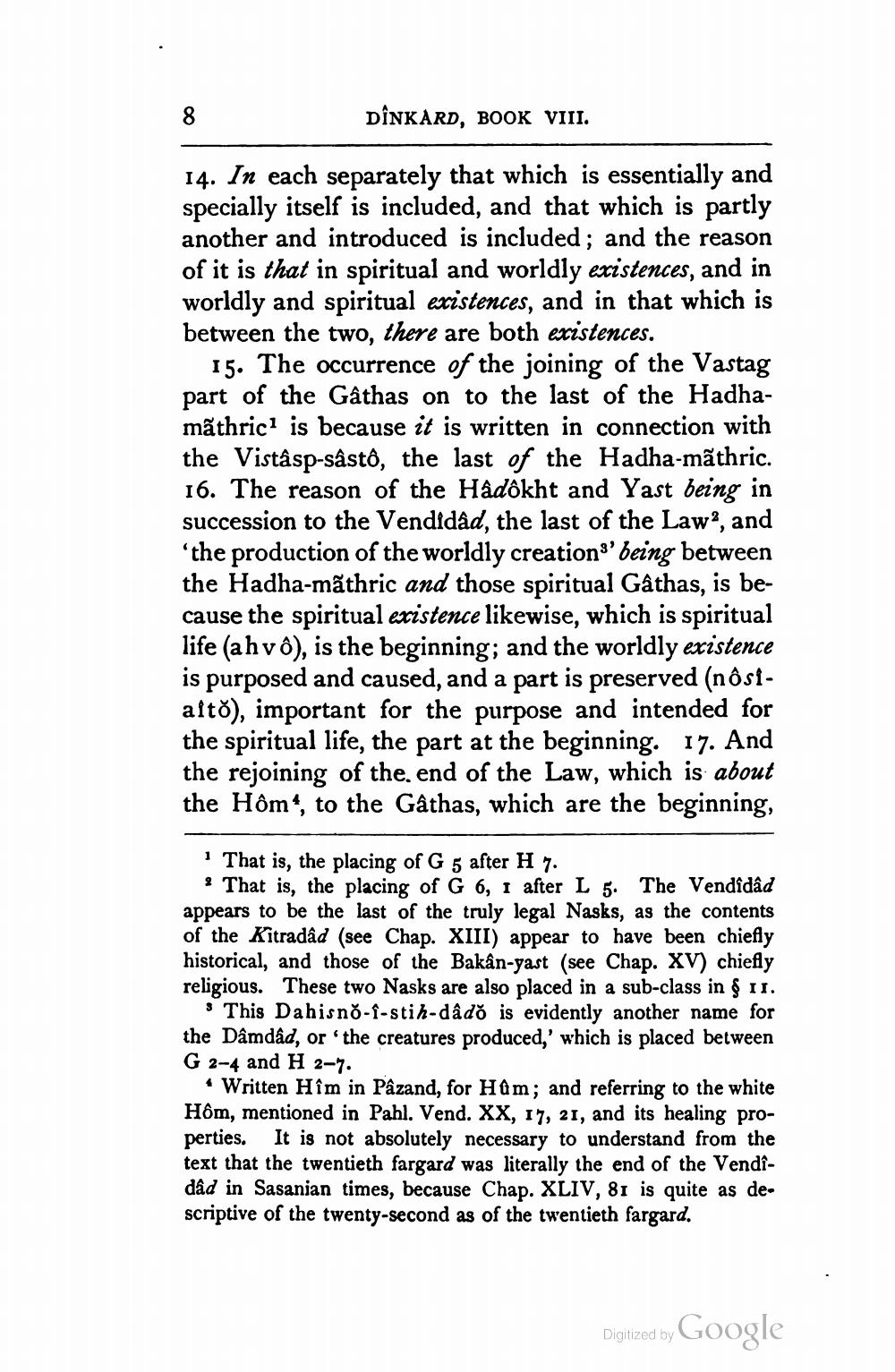________________
DÎNKARD, BOOK VIII.
14. In each separately that which is essentially and specially itself is included, and that which is partly another and introduced is included; and the reason of it is that in spiritual and worldly existences, and in worldly and spiritual existences, and in that which is between the two, there are both existences.
15. The occurrence of the joining of the Vastag part of the Gathas on to the last of the Hadhamãthric? is because it is written in connection with the Vistâsp-sâstô, the last of the Hadha-mãthric. 16. The reason of the Hâdôkht and Yast being in succession to the Vendidâd, the last of the Law, and 'the production of the worldly creationa' being between the Hadha-mãthric and those spiritual Gathas, is because the spiritual existence likewise, which is spiritual life (a hvô), is the beginning; and the worldly existence is purposed and caused, and a part is preserved (nôstaito), important for the purpose and intended for the spiritual life, the part at the beginning. 17. And the rejoining of the end of the Law, which is about the Hôm“, to the Gathas, which are the beginning,
1 That is, the placing of G 5 after H 7.
? That is, the placing of G 6, 1 after L 5. The Vendidad appears to be the last of the truly legal Nasks, as the contents of the Kitradâd (see Chap. XIII) appear to have been chiefly historical, and those of the Bakan-yast (see Chap. XV) chiefly religious. These two Nasks are also placed in a sub-class in § 11.
* This Dahisno-i-stih-dâdo is evidently another name for the Dâmdâd, or the creatures produced,' which is placed between G 2-4 and H 2–7.
• Written Him in Pazand, for Ham; and referring to the white Hôm, mentioned in Pahl. Vend. XX, 17, 21, and its healing properties. It is not absolutely necessary to understand from the text that the twentieth fargard was literally the end of the Vendidâd in Sasanian times, because Chap. XLIV, 81 is quite as descriptive of the twenty-second as of the twentieth fargard.
Digitized by Google




